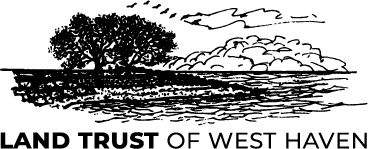Environmental, Social and Economic Well-Being
The Importance of Healthy Shorelines
Healthy shoreline ecosystems provide essential benefits for both the environment and human communities. These ecosystems reduce runoff, prevent erosion, filter pollutants, and act as natural barriers against storms and flooding. Their ability to mitigate climate impacts and their role in supporting biodiversity makes them critical to environmental, social, and economic well-being.
Shoreline ecosystems also enrich human life in many ways. They offer opportunities for recreation, enhance mental and physical health, and support local economies through tourism and fishing industries. Preserving and restoring these habitats ensures that they continue to provide these benefits while also assisting people with adaptation to the challenges of climate change and other human impacts.
The Role of Nature in Human Well-being
Nature is essential for human life, providing water, air, food, and materials for industries and buildings. Healthy ecosystems also support cultural and recreational activities that improve quality of life. Natural settings are vital to human health and well-being, and studies have shown that access to them enhances mental health, reduces stress, and fosters a sense of connection to the environment. This is especially true for urban green spaces, such as parks, community gardens, and planted shoreline areas. Research has shown that green spaces provide the following benefits:
- Crime Reduction: A randomized trial found that vacant lots transformed into green spaces saw reduced crime rates in a U.S. city, especially in low-income neighborhoods. Residents reported feeling safer and more likely to use outdoor spaces for relaxation and socialization (Branas et al. 2018).
- Physical and Mental Health: Green spaces offer opportunities for physical activity, such as walking, biking, or playing, and promote psychological restoration through exposure to nature (Lee et al. 2015).
- Environmental Benefits: Trees and plants in urban areas reduce urban heat, absorb carbon dioxide, and mitigate stormwater runoff, improving air and water quality. Find more information about these benefits on the Native Plants page.
Understanding Ecosystems and Resilience
What is an Ecosystem?
An ecosystem is a community of living organisms — plants, animals, and microorganisms — that interact with their physical environment, including air, water, soil, and climate. Each part of an ecosystem depends on the others, creating a balanced and interconnected system. Healthy ecosystems provide essential resources, including clean water, air, food, and raw materials.
What Harms Ecosystems?
Human activities are the primary drivers of ecosystem degradation. Pollution, habitat loss, invasive species, and climate change disrupt ecosystem processes, leading to challenges such as ocean acidification, extreme weather events, and biodiversity loss. Protecting ecosystems requires a concerted effort to reduce these stressors and restore natural habitats.
How Can I Tell if a Shoreline Ecosystem is Healthy?
- Diverse Wildlife: A variety of animals, birds, and insects inhabit the area, including pollinators like bees and butterflies, migratory birds, and marine species. Their presence indicates a functioning and balanced ecosystem.
- Abundant Native Plants: Native plants such as beach grass, seaside goldenrod, and beach plum stabilize dunes, prevent erosion, and provide food and shelter for wildlife. Their success reflects minimal invasive species and healthy soil conditions.
- Clean and Clear Water: The water appears clean and supports aquatic life, with balanced levels of algae that do not lead to harmful algal blooms. This indicates good water quality and proper nutrient management.
- Well-Maintained Shoreline: The area is free of trash, plastics, and other pollution, ensuring that marine life and shoreline species are not endangered by debris. Regular cleanups and responsible waste management contribute to this condition.
- Resilient Habitat Features: Signs of thriving dunes, wetlands, and tidal marshes demonstrate the shoreline’s ability to withstand storms and adapt to rising sea levels, supporting long-term resilience.
What is Resilience?
Resilience is the ability of an ecosystem or community to recover from disturbances while maintaining essential functions. In coastal environments, resilience means adapting to sea level rise, extreme weather events, and human impacts while preserving the natural processes and biodiversity that support a healthy shoreline.
Building Sustainable and Resilient Communities
A sustainable and resilient Long Island Sound community integrates social, environmental, and economic goals to ensure the well-being of present and future generations. This involves:
- Equity and Inclusion: Ensuring that historically underserved and overburdened communities are prioritized in planning and decision-making.
- Identifying Key Structures and Threats: Recognizing the critical social and ecological systems that sustain community well-being and addressing threats to these systems.
- Implementing Adaptive Strategies: Developing and executing actions to preserve, restore, and improve essential structures and functions while preparing for future challenges.
For coastal communities along Long Island Sound such as West Haven, the home of Eco Park, this means addressing issues such as flooding, water pollution, and habitat degradation while fostering environmental education, economic development, and social cohesion.
By understanding the interconnectedness of nature and human well-being, we can build resilient communities that thrive in harmony with their environments, ensuring a brighter future for all.
Resources
Ecosystem Targets and Indicators | Long Island Sound Study – Explore how researchers assess the health of Long Island Sound through specific ecosystem targets.
Sustainable and Resilient Communities | Long Island Sound Study – Learn about strategies to empower communities to address environmental challenges and prioritize wellbeing.
Long Island Sound Resilience Resource Hub | Long Island Sound Study – A one-stop shop for locally relevant guidance on moving your community towards resilience.
Resilient Connecticut | CIRCA – Discover planning frameworks and pilot projects designed to improve regional resilience in Connecticut.
How do trees and green spaces enhance our health? | Harvard Health – This article cites a collection of research linking improved health outcomes to time spent in nature.
Citations
Branas CC, South E, Kondo MC, Hohl BC, Bourgois P, Wiebe DJ, MacDonald JM. Citywide cluster randomized trial to restore blighted vacant land and its effects on violence, crime, and fear. Proceedings of the National Academy of Sciences. February 26, 2018;115 (12): 2946-2951. doi: 10.1073/pnas.1718503115
Lee AC, Jordan HC, Horsley J. Value of urban green spaces in promoting healthy living and well-being: prospects for planning. Risk Management and Healthcare Policy. August 27, 2015; pages131-7. doi: 10.2147/RMHP.S61654




